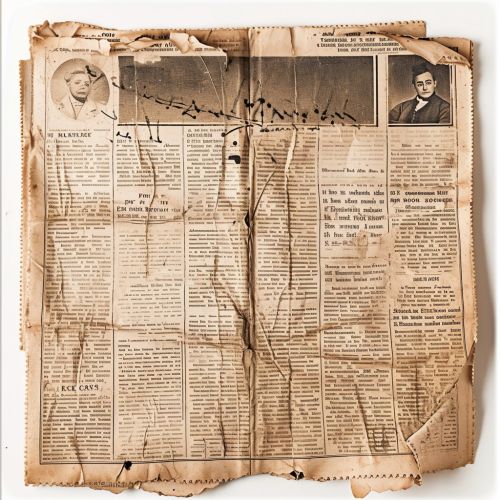History of American newspapers
Colonial period
The history of American newspapers begins in the early 18th century with the publication of the first colonial newspapers. American newspapers began as modest affairs—a sideline for printers. They became a political force in the campaign for American independence. Following independence, the first article of U.S. Constitution guaranteed freedom of the press. The U.S. postal system has established itself as a major part of the country's communication system.
Revolutionary period
The late 18th century saw the establishment of freedom of the press as a fundamental American value. The Revolution made publishers more independent of authorities. Newspapers fanned the flames of revolution by publishing grievances against the British Crown and reprinting pamphlets by revolutionaries. The most dramatic confrontation came in New York in 1734, where the governor brought the publisher of the New York Weekly Journal, John Peter Zenger, to trial for criminal libel after the publication of satirical attacks. The jury acquitted Zenger, who became the iconic American hero for freedom of the press.
Party politics
The first parties were formed during the Federalist Era. The Federalist Party, which supported a strong central government, was opposed by the Democratic-Republicans, led by Thomas Jefferson, who advocated states' rights. The newspapers of the day reflected the views of the party in power. The Federalist papers, like the Gazette of the United States, represented the Federalists, while the National Gazette represented the Republicans.


Penny press, telegraph and party politics
In the Jacksonian era and with the advent of the telegraph in the 1830s, news from Washington, D.C., could be spread quickly nationwide. As newspapers became more numerous and affordable, many more people were able to access this information. The development of the telegraph and the expansion of the country's railroads helped spread information quickly, leading to the rise of the penny press.
Yellow journalism
The period in journalism history known as "yellow journalism" was marked by sensationalist reporting and the use of illustrations. The term was coined to describe the tactics employed in the fierce competition between the New York World and the New York Journal. The term derived from a popular cartoon strip that appeared in the New York World.
Progressive Era
During the Progressive Era (1890s–1920s), reform-oriented journalists used investigative reporting to expose social ills and corporate and political corruption. Muckraking magazines, most notably McClure's, took on corporate monopolies and political machines while raising public awareness of chronic urban poverty, unsafe working conditions, and social issues like child labor.
Modern journalism
The 20th century saw innovations in journalism, and newspapers reached their peak of influence and professionalism in the 1940s and 1950s. The number of city newspapers has declined, while online news outlets have proliferated. Today, the work of journalism can be found in an assortment of media: newspapers, television, radio, magazines, and the internet.
